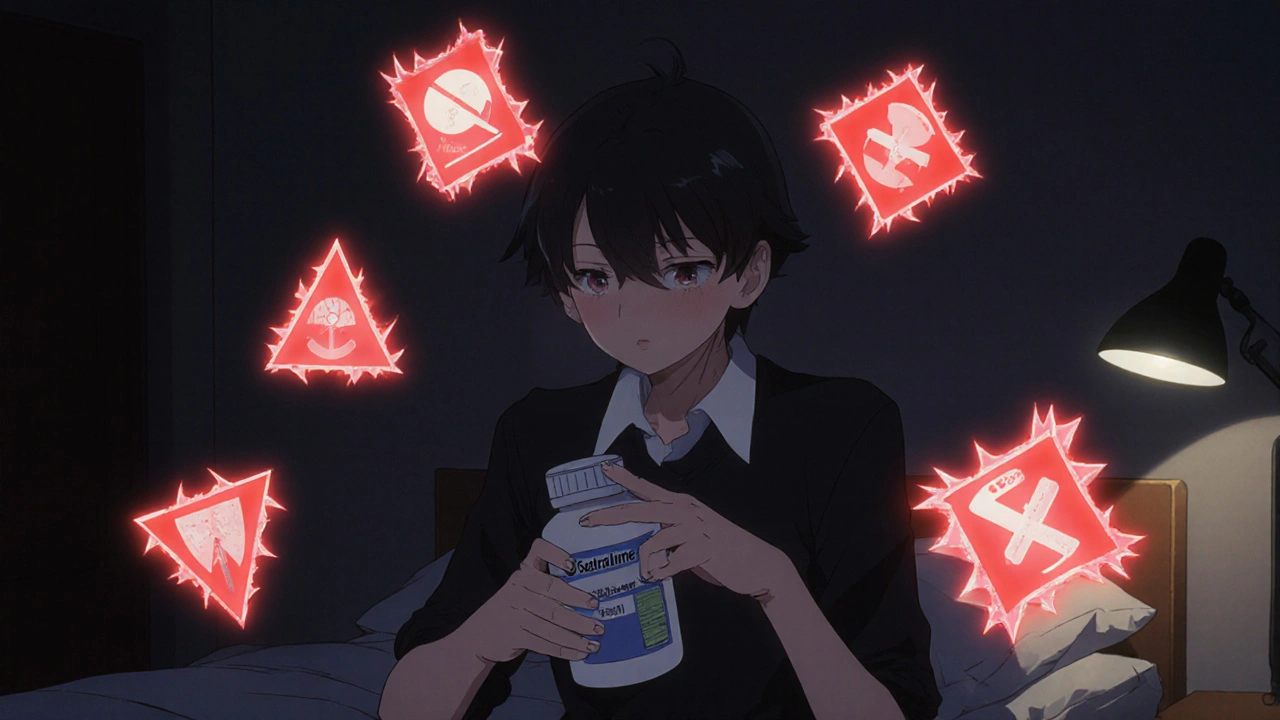Sertraline Side Effects: What to Expect and When to Worry
When you start taking sertraline, a selective serotonin reuptake inhibitor (SSRI) used to treat depression, anxiety, and OCD. Also known as Zoloft, it helps balance brain chemicals—but it doesn’t work without some trade-offs. Many people feel better within weeks, but side effects are common, especially in the first month. Not everyone gets them, but if you do, knowing what’s normal versus what’s not can save you stress—and maybe a trip to the ER.
Common side effects like nausea, loose stools, dry mouth, and trouble sleeping usually fade after a couple of weeks. These aren’t signs the drug isn’t working—they’re signs your body is adjusting. More serious ones, like increased anxiety at first, unusual bleeding, or thoughts of self-harm, need immediate attention. If you’re on sertraline and suddenly feel worse instead of better, don’t wait. Talk to your doctor. It’s not weakness. It’s smart. Sertraline interacts with other meds too, like blood thinners or NSAIDs like aceclofenac, so if you’re taking anything else, your pharmacist needs to know. And if you’ve tried other antidepressants like vilazodone or cymbalta before, you might recognize some of these reactions—but sertraline has its own pattern.
Some people worry about weight gain or sexual side effects. Studies show about 1 in 5 users report reduced libido or trouble reaching orgasm. That’s not rare. It’s expected. But it’s not permanent for everyone. Switching doses or timing your pill can help. And if you’re on sertraline long-term, you’ll want to know how to report side effects properly—because your doctor can’t fix what they don’t know. The posts below cover exactly that: how to track symptoms, compare sertraline to other antidepressants, spot red flags, and talk to your provider without feeling dismissed. You’re not alone in this. And you don’t have to guess what’s normal.

